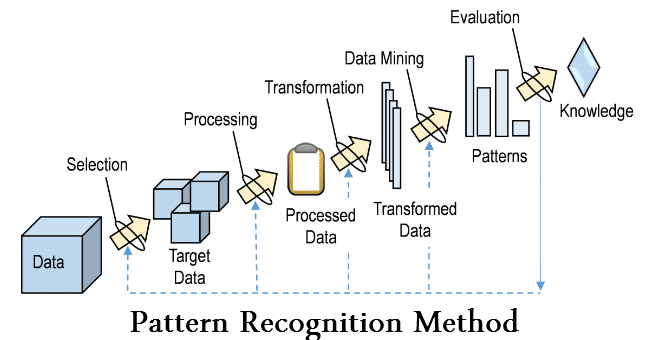An Insight into 26 Big Data Analytic Techniques: Part 2
- by 7wData

Till now in my blogs about Big Data, I have acquainted you with different aspects of Big Data, from What it actually means to facts and do’s and don’ts of it. In the previous blog we saw some Big Data Analytics Techniques. Taking the List further in this blog.
Pattern recognition is a branch of Machine Learning that focuses on the recognition of patterns and regularities in data, although it is in some cases considered to be nearly synonymous with Machine Learning. Pattern recognition systems are in many cases trained from labeled “training” data (Supervised learning), but when no labeled data are available other algorithms can be used to discover previously unknown patterns (unsupervised learning).
Predictive analytics comprise a variety of techniques that predict future outcomes based on historical and current data. In practice, predictive analytics can be applied to almost all disciplines – from predicting the failure of jet engines based on the stream of data from several thousand sensors, to predicting customers’ next moves based on what they buy, when they buy, and even what they say on social media. Predictive analytics techniques are primarily based on statistical methods.
This is a technique that take the use of independent variables and how they affect dependent variables. This can be a very useful technique in determining social media analytics like the probability of finding love over an internet platform.
Sentiment Analysis helps researchers determine the sentiments of speakers or writers with respect to a topic. Sentiment Analysis is being used to help:
Signal processing is an enabling technology that encompasses the fundamental theory, applications, algorithms, and implementations of processing or transferring information contained in many different physical, symbolic, or abstract formats broadly designated as signals. It uses mathematical, statistical, computational, heuristic, and linguistic representations, formalisms, and techniques for representation, modelling, analysis, synthesis, discovery, recovery, sensing, acquisition, extraction, learning, security, or forensics. Sample applications include modeling for time series analysis or implementing data fusion to determine a more precise reading by combining data from a set of less precise data sources (i.e., extracting the signal from the noise).
Spatial analysis is the process by which we turn raw data into useful information. It is the process of examining the locations, attributes, and relationships of features in spatial data through overlay and other analytical techniques in order to address a question or gain useful knowledge. Spatial analysis extracts or creates new information from spatial data.
In statistics, exploratory data analysis is an approach to analyzing data sets to summarize their main characteristics, often with visual methods. A statistical model can be used or not, but primarily EDA is for seeing what the data can tell us beyond the formal modelling or hypothesis testing task. Statistical techniques are also used to reduce the likelihood of Type I errors (“false positives”) and Type II errors (“false negatives”). An example of an application is A/B testing to determine what types of marketing material will most increase revenue.
Supervised learning is the machine learning task of inferring a function from labeled training data.
[Social9_Share class=”s9-widget-wrapper”]
Upcoming Events
From Text to Value: Pairing Text Analytics and Generative AI
21 May 2024
5 PM CET – 6 PM CET
Read MoreYou Might Be Interested In
4 examples of data, reporting and analytics in education
23 Apr, 2017Leaders in the education industry understand that when people at all levels have timely access to the right data and …
Analyst predictions: The future of data management
20 Jan, 2023In the 2010s, organizations became keenly aware that data would become the critical ingredient in driving competitive advantage, differentiation and …
Strata HadoopWorld Fall 2016 postmortem: Maybe AI’s the future, but can we make the data science work?
10 Oct, 2016Given all the hype over artificial intelligence (AI) these days, at first glance it would seem surprising that it appeared …
Recent Jobs
Do You Want to Share Your Story?
Bring your insights on Data, Visualization, Innovation or Business Agility to our community. Let them learn from your experience.
Privacy Overview
Get the 3 STEPS
To Drive Analytics Adoption
And manage change


